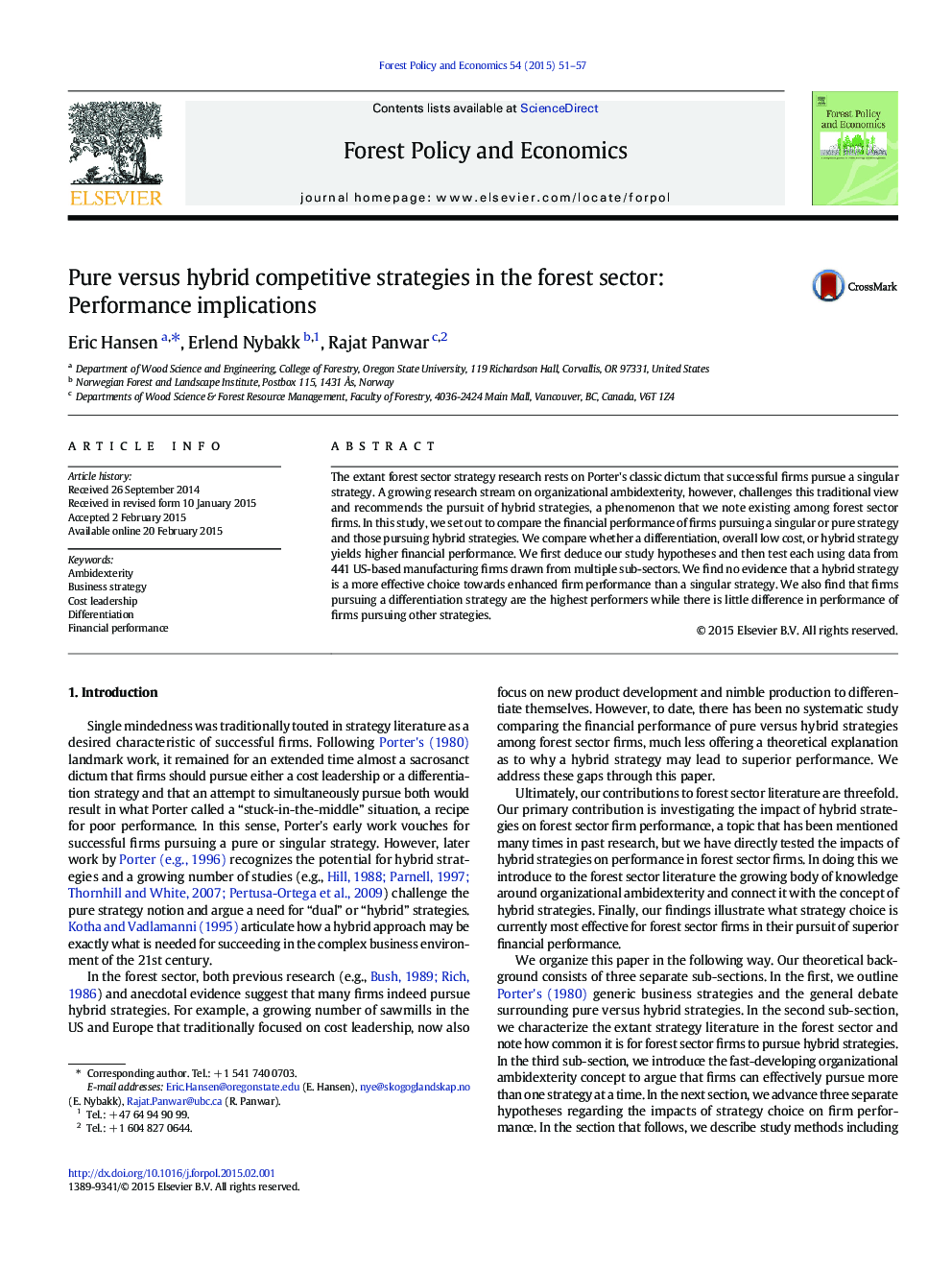| Article ID | Journal | Published Year | Pages | File Type |
|---|---|---|---|---|
| 91195 | Forest Policy and Economics | 2015 | 7 Pages |
•We compare firm performance impacts among pure and hybrid strategies.•Firms pursuing a differentiation strategy are the highest performers.•A hybrid strategy is not a more effective choice for improved performance.•A hybrid strategy may be better realized as ambidexterity further institutionalizes.
The extant forest sector strategy research rests on Porter's classic dictum that successful firms pursue a singular strategy. A growing research stream on organizational ambidexterity, however, challenges this traditional view and recommends the pursuit of hybrid strategies, a phenomenon that we note existing among forest sector firms. In this study, we set out to compare the financial performance of firms pursuing a singular or pure strategy and those pursuing hybrid strategies. We compare whether a differentiation, overall low cost, or hybrid strategy yields higher financial performance. We first deduce our study hypotheses and then test each using data from 441 US-based manufacturing firms drawn from multiple sub-sectors. We find no evidence that a hybrid strategy is a more effective choice towards enhanced firm performance than a singular strategy. We also find that firms pursuing a differentiation strategy are the highest performers while there is little difference in performance of firms pursuing other strategies.
